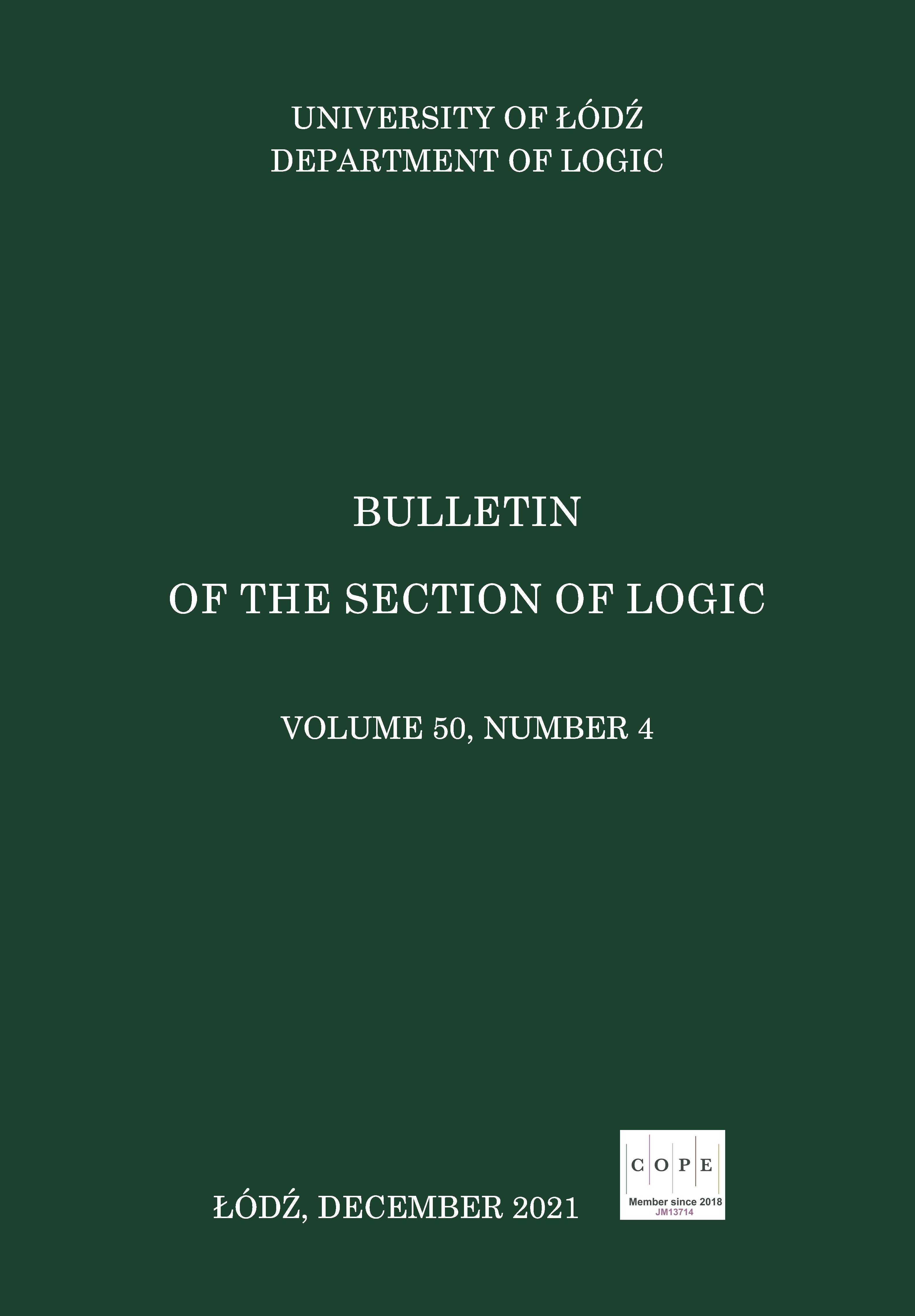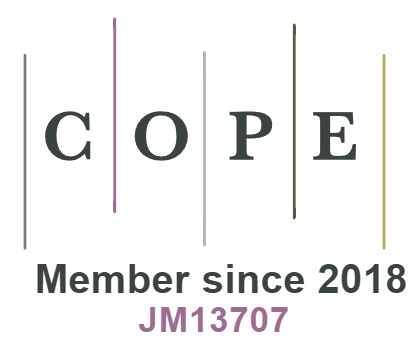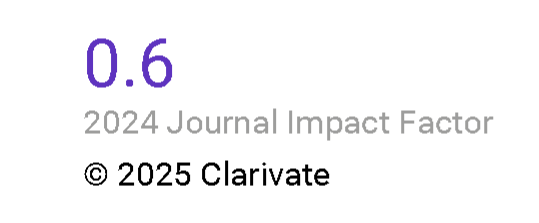On the Category of EQ-algebras
DOI:
https://doi.org/10.18778/0138-0680.2021.01Keywords:
EQ-algebras, free EQ-algebras, category theory, universal algebra, varietyAbstract
In this paper, we studied the category of EQ-algebras and showed that it is complete, but it is not cocomplete, in general. We proved that multiplicatively relative EQ-algebras have coequlizers and we calculated coproduct and pushout in a special case. Also, we constructed a free EQ-algebra on a singleton.
References
[1] J. Adámek, H. Herrlich, G. E. Strecker, Abstract and concrete categorise, the joy of cats, no. 17 in A Wiely series OF Texts, Monographs and Tracts Pure and applied mathematics, John Wiley and Sons, New york (1990).
Google Scholar
[2] S. Awodey, Category theory, Oxford Logic Guides, Clarendon press, Oxford (2006).
Google Scholar
[3] T. S. Blyth, Categories, Longman, London (1986).
Google Scholar
[4] R. A. Borzooei, M. Bakhshi, O. Zahiri, Filter theory on hyper residuated lattices, Quasigroups and Related Systems, vol. 22 (2014), pp. 33–50, DOI: http://dx.doi.org/10.1090/S0002-9904-1935-06166-X.
Google Scholar
[5] R. A. Borzooei, A. A. Estaji, M. Mobini, On the category of rough sets, Soft Computing, vol. 21 (2017), pp. 2201–2214, DOI: http://dx.doi.org/10.1007/s00500-016-2135-9.
Google Scholar DOI: https://doi.org/10.1007/s00500-016-2135-9
[6] R. A. Borzooei, S. Kaviani, M. M. Zahed, Category of MV-algebras, Italian Journal of Pure and Applied Mathematics, vol. 19 (2016), pp. 61–74, DOI: http://dx.doi.org/10.2307/2267577.
Google Scholar DOI: https://doi.org/10.2307/2267577
[7] R. A. Borzooei, M. Mobini, M. M. Ebrahimi, The category of soft sets, Journal of Intelligent and Fuzzy Systems, vol. 28(1) (2015), pp. 157–171, DOI: http://dx.doi.org/110.3233/IFS-141286.
Google Scholar DOI: https://doi.org/10.3233/IFS-141286
[8] S. Burris, H. P. Sankappanavar, A course in universal algebra (Graduate Texts in Mathematics), no. 78 in OXFORD LOGIC GUIDES, Springer-Verlag, New York-Berlin (1981), DOI: http://dx.doi.org/10.2307/2322184.
Google Scholar DOI: https://doi.org/10.1007/978-1-4613-8130-3
[9] R. Cignoli, D. Mundici, An elementary presentation of the equivalence between MV-algebras and (ell)-groups with strong units, Studia Logica, special issue on Many-valued logics, vol. 61 (1998), pp. 49–64.
Google Scholar
[10] A. DiNola, L. Leustean, Compact representations of BL-algebras, Archive Mathematical Logic, vol. 42(8) (2003), pp. 737–761, DOI: http://dx.doi.org/10.1007/s00153-003-0178-y.
Google Scholar DOI: https://doi.org/10.1007/s00153-003-0178-y
[11] A. Dvurečenskij, Commutative BCK-algebras with product, Demonstratio Mathematica,, vol. XXXIII(1) (2000), pp. 1–19, DOI: http://dx.doi.org/10.2307/2267577.
Google Scholar DOI: https://doi.org/10.1515/dema-2000-0102
[12] G. Dymek, On the category of pseudo-BCI-algebras, Demonstatio Mathematica, vol. XLVI(4) (2013), pp. 631–644, DOI: http://dx.doi.org/10.1515/dema-2013-0479.
Google Scholar DOI: https://doi.org/10.1515/dema-2013-0479
[13] M. El-Zekey, Representable good (EQ)-algebras, Soft Computing, vol. 14(9) (2010), pp. 1011–1023, DOI: http://dx.doi.org/10.1016/j.fss.2011.05.011.
Google Scholar DOI: https://doi.org/10.1007/s00500-009-0491-4
[14] M. El-Zekey, V. Novák, R. Mesiar, On good (EQ)-algebras, Fuzzy Sets and Systems, vol. 178(1) (2011), pp. 1–23, DOI: http://dx.doi.org/10.1016/j.fss.2011.05.011.
Google Scholar DOI: https://doi.org/10.1016/j.fss.2011.05.011
[15] S. Maclane, Categories for the working mathematician (second ed.), vol. 5 of Graduate Texts in Mathematics, Springer-Verlag (1978), DOI: http://dx.doi.org/10.1007/978-1-4757-4721-8.
Google Scholar
[16] V. Novák, (EQ)-algebras: Primary concepts and properties, in: Proc. Czech-Japan Seminar, Ninth Meeting, Kitakyushu and Nagasaki, Graduate School of Information, Waseda University, (2006).
Google Scholar
[17] V. Novák, (EQ)-algebras-based fuzzy type theory and its extensions, Logic Journal of the IGPL, vol. 19(3) (2011), pp. 512–542, DOI: http://dx.doi.org/10.1093/jigpal/jzp087.
Google Scholar DOI: https://doi.org/10.1093/jigpal/jzp087
[18] V. Novák, B. D. Baets, (EQ)-algebras, Fuzzy Sets and Systems, vol. 160(20) (2009), pp. 2956–2978, DOI: http://dx.doi.org/0.1016/j.fss.2009.04.010.
Google Scholar DOI: https://doi.org/10.1016/j.fss.2009.04.010
[19] J. Yang, X. Zhang, Finite direct product of (EQ)-algebras, Soft Computing, vol. 23 (2019), pp. 7495–7504, DOI: http://dx.doi.org/10.1007/s00500-018-03687-5.
Google Scholar DOI: https://doi.org/10.1007/s00500-018-03687-5
[20] F. Zebardast, R. A. Borzooei, M. A. Kologhani, Results on equality algebras, Information Sciences, vol. 381(1) (2017), pp. 270–282, DOI: http://dx.doi.org/10.1016/j.ins.2016.11.027.
Google Scholar DOI: https://doi.org/10.1016/j.ins.2016.11.027
Downloads
Published
How to Cite
Issue
Section
License

This work is licensed under a Creative Commons Attribution-NoDerivatives 4.0 International License.















